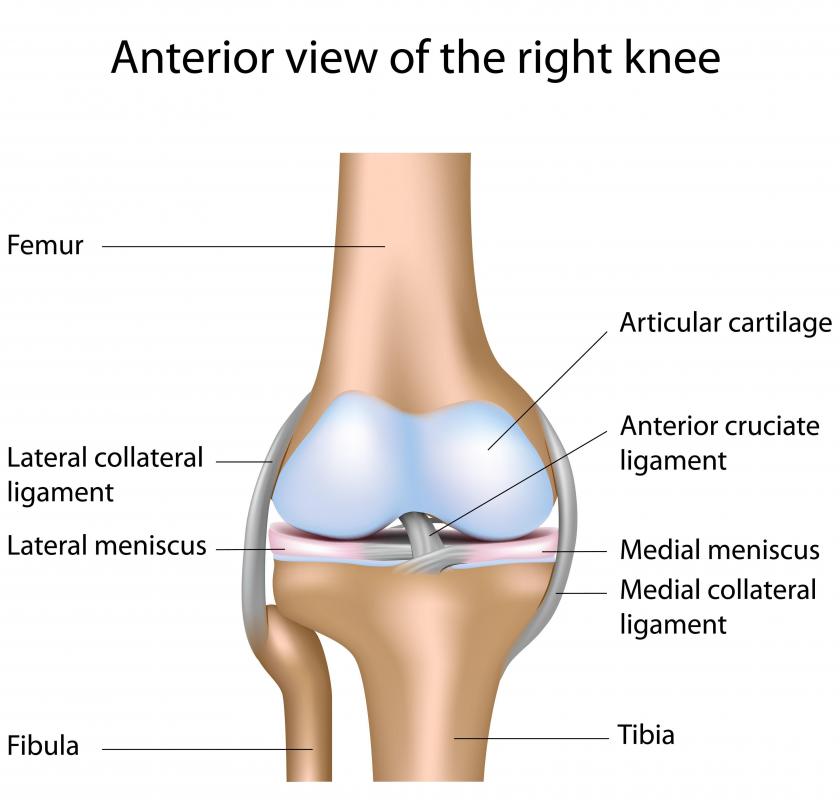At WiseGEEK, we're committed to delivering accurate, trustworthy information. Our expert-authored content is rigorously fact-checked and sourced from credible authorities. Discover how we uphold the highest standards in providing you with reliable knowledge.
What is a Revision Knee Replacement Procedure?
Revision knee replacement is a surgery to take out a failing knee prosthesis and replace it with a new one. Depending on the implant, the patient's age, and the patient's activity levels, a knee replacement can fail in 10 to 15 years. People who receive knee replacements as young adults or in middle age should expect to undergo a revision knee replacement. The technology behind prosthetics is constantly improving, and the lifetime of the new prosthesis may be better than that of the old one.
The knee is one of the most active joints in the body, and this tends to wear on a prosthesis. In addition to normal wear, other issues leading to the need for revision knee replacement can include infection, loosing of the device in the joint, and damage to neighboring bone and tissue. Replacing a prosthesis is not a simple task, because the surgeon cannot simply swap parts, but must prepare the knee for the new prosthesis in a series of steps.

This procedure requires more technical skills and a longer operation than the original knee replacement. First, the surgeon has to take out the old prosthesis along with any cement, pins, and other supporting materials. Dead bone may also need to be trimmed away. In some cases, it is necessary to perform a bone graft to replace damaged bone before the doctor can fit the new prosthesis in place and close the surgical site.

Patients who receive a revision knee replacement surgery should experience an improvement in comfort and mobility levels. A surgeon will recommend revision knee replacement if a failing prosthesis is clearly having a negative impact on a patient's quality of life. If the patient is not very active or the surgery carries too many risks, it may not be a good idea, as the costs will outweigh the benefits. Patients can experience complications like bad reactions to anesthesia, infection, or premature failure of the new prosthesis.

People preparing for their first knee replacement surgery should ask about the different options available and may want to get information on revision. This can help them make an informed choice about the best surgery for their needs. It is important to be aware that because medicine is an evolving field, the information a surgeon provides will become out of date eventually, and patients may want to discuss new developments in knee prosthetics during their follow-up visits to make sure they are working with the latest data.
AS FEATURED ON:
AS FEATURED ON:













Discuss this Article
Post your comments